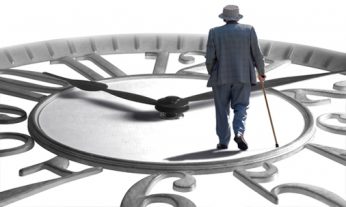 Labor law and workplace age discrimination. You have worked for your employer for some time, and you are starting to notice a disturbing trend. Younger employees seem to be passing you by at an alarming rate. Are these colleagues outperforming you, or are you experiencing workplace age discrimination? If you suspect ageism is at the root of the issue, it may be worthwhile to consult an employment attorney for advice.
Labor law and workplace age discrimination. You have worked for your employer for some time, and you are starting to notice a disturbing trend. Younger employees seem to be passing you by at an alarming rate. Are these colleagues outperforming you, or are you experiencing workplace age discrimination? If you suspect ageism is at the root of the issue, it may be worthwhile to consult an employment attorney for advice.
What is Workplace Age Discrimination?
When individuals who are 40 and older experience roadblocks in the workplace and age is a primary factor, it is age discrimination. Federal law addresses the issue through the Age Discrimination in Employment Act (ADEA). Under ADEA, making age a factor in employment decisions with regard to hiring and firing, promotions and assignments, and compensation and perks is unlawful. In addition to the ADEA, the California Department of Fair Employment and Housing (DFEH) and the Equal Employment Opportunity Commission (EEOC) support fair practices for aging workers and potential workers.
Workplace Age Discrimination Complaints on the Rise
If you suspect workplace age discrimination is holding you back, you are not alone. According to the U.S. Equal Employment Opportunity Commission (USEEOC), the number of workplace age discrimination complaints in this country has grown from 19.8%in 1997 to 22.8% of all discrimination complaints. Nearly 21,000 such complaints were filed last year.
Whether or not complaints have been filed, older Americans report that age discrimination is alive and well in America. In fact, nearly 70% of workers aged 45-75 note that they have either seen or personally experienced the problem. Astonishingly, age is cited as one of the biggest obstacle to workers over the age of 35, particularly in high tech industries. The most common form of age discrimination, in fact, is related to not getting hired in the first place.
What We Know About Older Workers:
Research confirms several key points about older workers and what they need and want from their jobs:
- Most older Americans are working for economic reasons. They need a salary, or benefits, or both;
- Many older Americans are simply working because they enjoy it, and some are working on building up a nest egg for the future;
- Older workers want respect;
- These workers wish to be in a position that utilizes their particular talents and abilities.
- Older workers report being significantly more engaged in their work than their younger counterparts.
How do I Know if Workplace Age Discrimination is the Problem?
Proving age discrimination requires a significant burden of proof. Some things that may tip your employer’s hand include:
- Younger workers are being hired to replace fired older workers;
- You are assigned unenviable tasks in an attempt to get you to leave voluntarily;
- Your boss informally chats you up and asks when you are planning on moving on to greener pastures;
- After receiving glowing performance reviews for some time, you suddenly see your reviews take a significant dip. It looks like someone’s building a case to let you go;
- Everyone around you seems to be getting raises, but your pay is stagnant, despite equivalent job performance.
